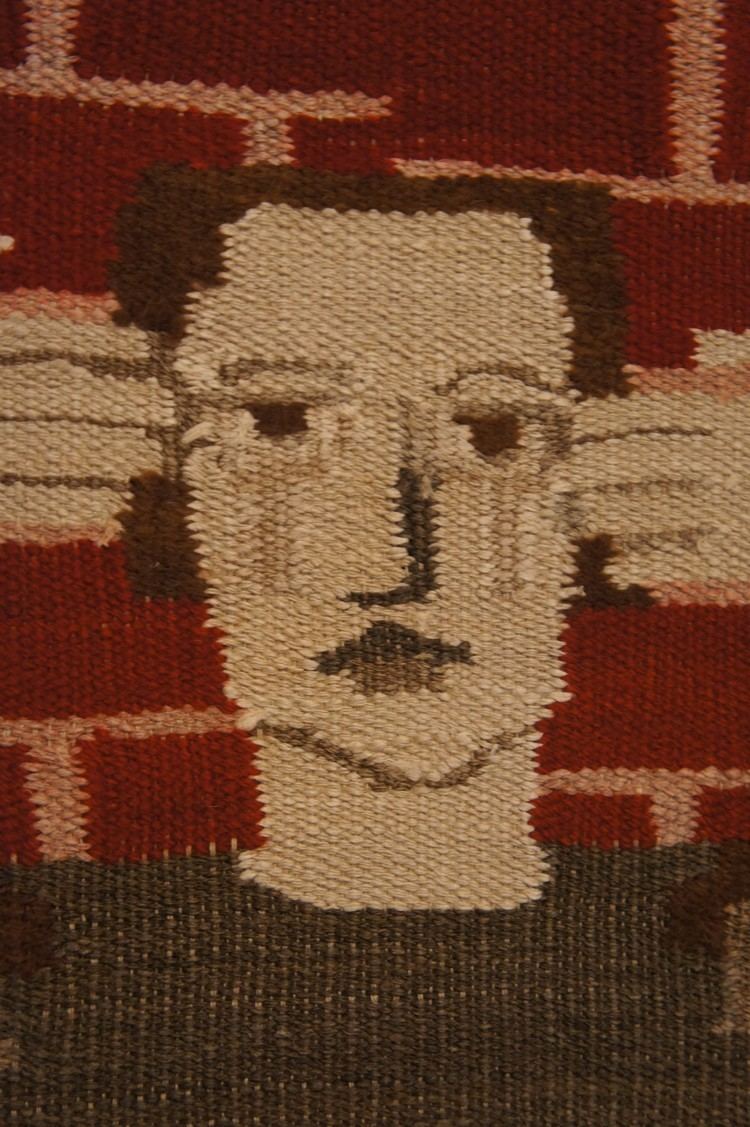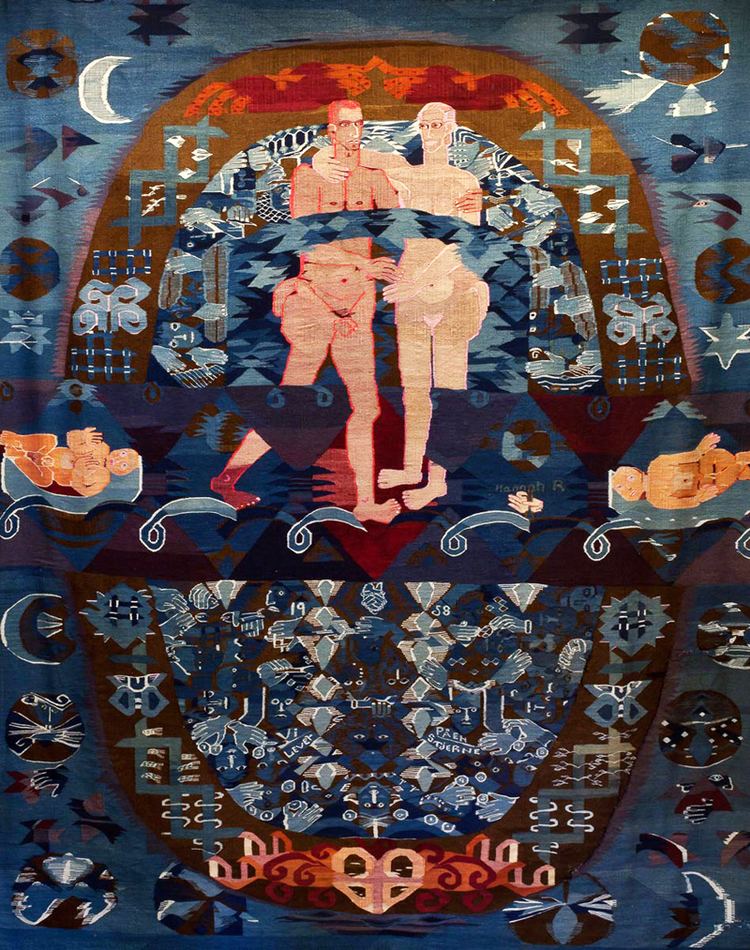Name Hannah Ryggen | ||
 | ||
Hannah ryggen verden i veven
Hannah Ryggen (21 March 1894, Malmö – 2 February 1970) was a Swedish-born Norwegian textile artist. Self-trained, she worked on a standing loom constructed by her husband, the painter Hans Ryggen. She lived on a farm on a Norwegian Fjord and dyed her yarn with local plants.
Contents
- Hannah ryggen verden i veven
- Hannah ryggen and other painters at the national museum of art in oslo norway
- Exhibitions
- Works
- Literature
- References

She was a pacifist who subscribed to Scandinavian feminist and leftist journals, and was active in the Norwegian Communist Party and international workers’ movements. She paid close attention to the rise of fascism in Europe, and made work in direct response to it. Her 1935 tapestry 'Etiopia' (Ethipoia) was triggered by Benito Mussolini’s invasion of the African country. It was shown at the Paris World’s Fair in 1937, next to Picasso’s Guernica (1937). Etiopia was also shown in 1939 at the New York World’s Fair, but there was a cloth covering the part of the scene with a spear piercing through Mussolini’s head. In 1936 she wove one tapestry called 'Hitlerteppet' (The Hitler Carpet), with two decapitated figures kneeling before a hovering cross, and one called 'Drømmedød' (Death of Dreams) depicting prisoners and murderous Nazis in a concentration camp. According to Marta Kuzma, although Ryggan "shared and affinity with Käthe Kollwitz, who also selected as her narrative the social, spiritual, and political disorder of her time, Ryggan bypassed Kollwitz's tendency to draft allegorical figures (such as Black Anna) and instead identified historical individuals who forged, installed, and enabled the totalitarian regime in those years – Mussolini, Hitler, Göring, Quisling, Churchill, and the Norwegian writer Knut Hamsun."

Ryggen created about one hundred large carpets in her lifetime. Following the formal traditions of 17th and 18th century Norwegian folk textile arts, her works combine figurative and abstract elements. Her 'Henders bruk' from 1949 was the first textile artwork acquired by the National Gallery of Norway. Twenty eight of her works were shown in a solo show at the Moderna Museet in Stockholm in 1962, and she was the first female Norwegian artist to be represented at the Venice Biennale, in 1964. In 2012 a selection of her woven works were included in dOCUMENTA (13) in Kassel.
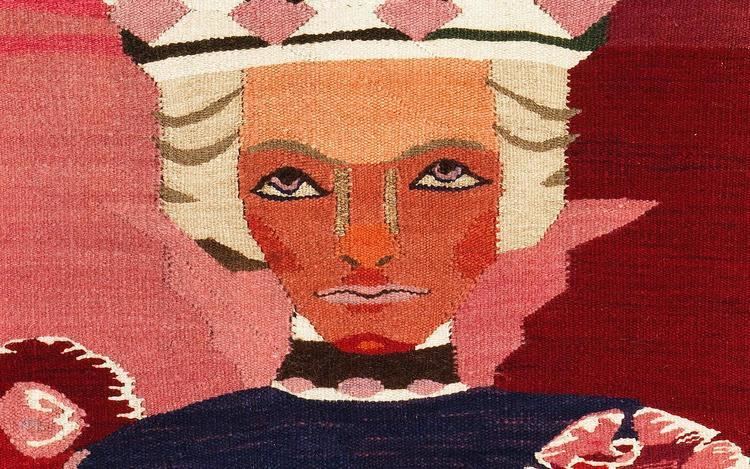
Hannah ryggen and other painters at the national museum of art in oslo norway
Exhibitions
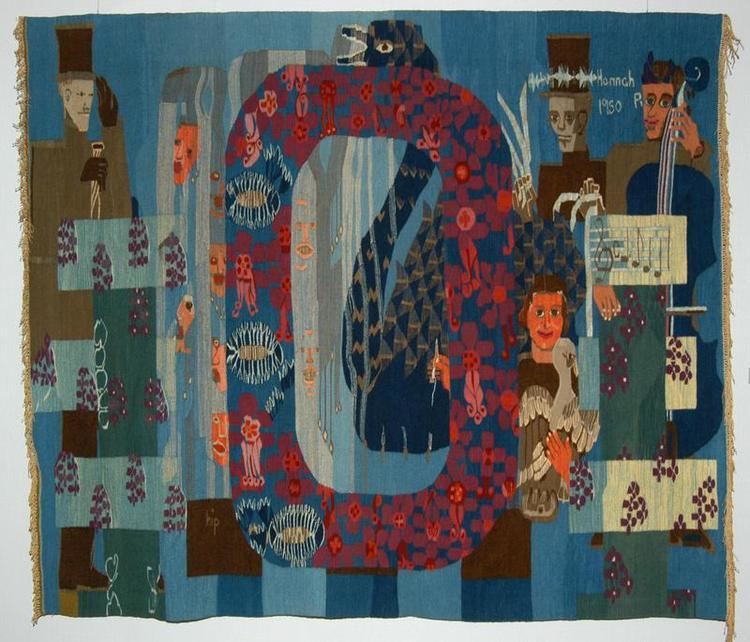
Works
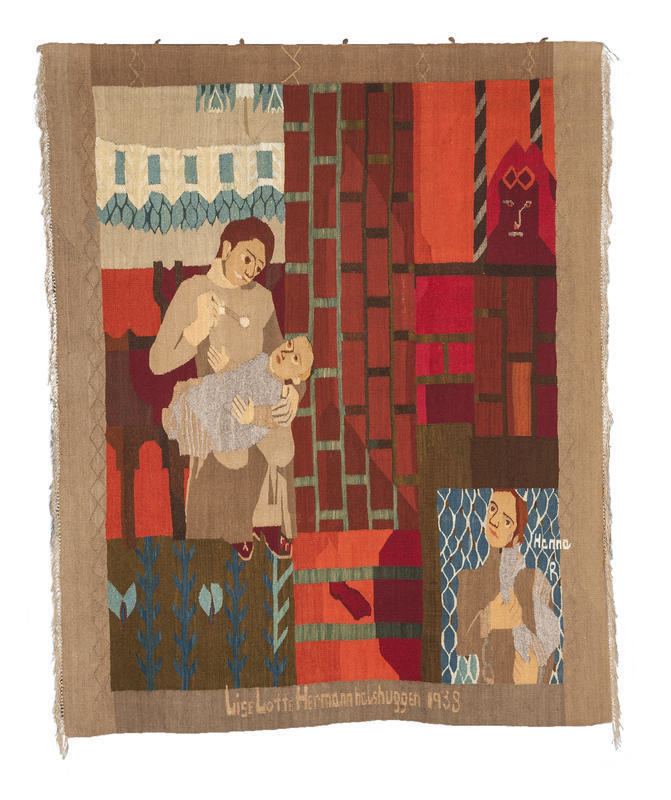
Literature
